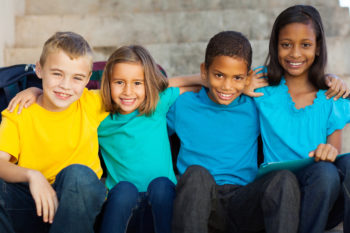Understanding Students’ Behaviors
 Understanding Students’ Behaviors
Understanding Students’ Behaviors
Behavior: Do We Really Understand Series? Part 1 of 3
The saying that has been cycling around my head goes something like this. Look around you. The five closest people in your life are those who you most likely emulate. They influence your thoughts, behavior, and overall choices in life. With that said, if you find yourself asking questions such as, Why did ____ do that? Doesn’t she know better? How many times do I have to tell you to ___? Chances are if you look around your circle, or your child’s circle, you will find someone in it who either mirrors the behavior or triggers it. Our actions are really not a mystery. However, changing them is a whole other story. This solution can very easily work at home for distance learning.
Use a Social Emotional Clip Chart
As educators and parents, we struggle with understanding behavior. In my 13 years of teaching, I had my first ah-ha in this area last year. Last year was one of those years where the students’ social emotional needs literally hijacked the classroom on a regular basis. Several often entered in the morning with a rating of 6-8 on a social emotional clip chart where 10 was considered exploding with anger.
Change the Top 5 Disrupting Behaviors
I was desperate to get the students’ buy in and to own or at least acknowledge what they were doing. So one day after many iterations of a behavior management system, I decided to show them a graph. I plotted the top 5 disrupting behaviors and told them I needed them to team with me to become ambassadors, who could model the right behavior in these critical areas.
Help Students Self-Regulate Their Choices
To my surprise the ones who contributed to the disrupting behavior were the very same students who willingly volunteered to be the representative for the desired response. My first thought was I didn’t see that coming. Then I reflected and realized that I was wrong because I was asking the wrong questions. Asking them to stop the behavior was never going to work. But if I could get them to wrap their thinking around what they were doing and guide them to make different choices, then I could partner with them in self-regulating their choices. This was a fundamental shift on a continuum of denial of their disruptive behavior. It ranged from mindless impulsivity to awareness, acceptance, choice and finally action.
Next week we will learn how to help students express gratitude and solve behavior challenges.
Danielle
Copyright (c) 2020 by GenParenting